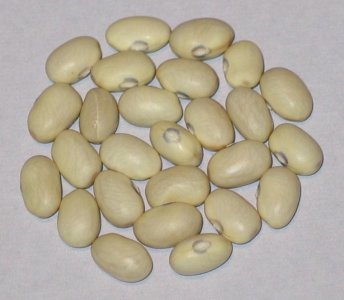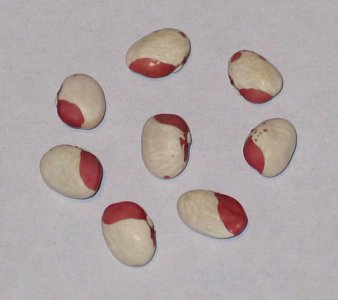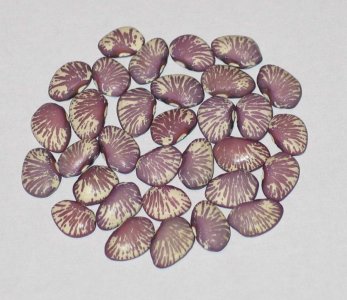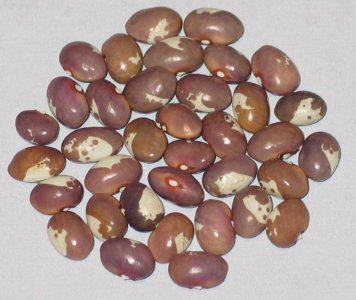Zeedman
Garden Master
2021 beans, continued.
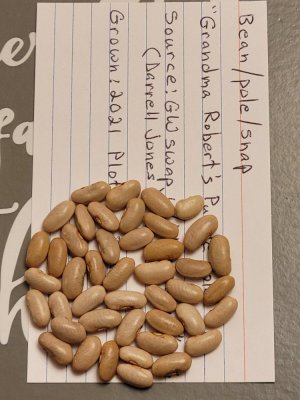
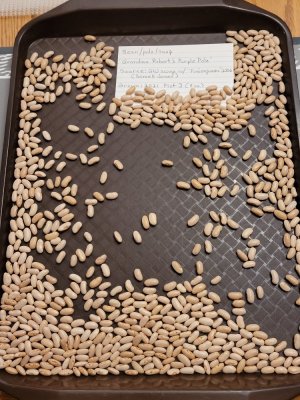
"Grandma Robert's Purple Pole", from a 2006 Gardenweb swap with Darrell Jones, who inherited it from his Grandma Roberts in Pelham, Tennessee. Snap bean with round purple 5" pods. Dry pods often shrink down over seeds, and offer fairly good protection from moisture. It has an unusual attribute, in that the sprouts often have 3 or 4 primary leaves instead of the usual pair... something which appears in 10-25% of the seedlings. The source confirmed this peculiarity is genetic. Tolerates heat & is normally very productive, but the first round of flooding killed 1/4 of the row, and stunted the rest. A second round of heavy rains struck as the remaining plants were beginning to recover, killed another 1/4, and permanently stunted the survivors. Those survivors produced 8 ounces of seed, enough to replace the old stock... but I will grow it again soon, to preserve its unusual genetic traits.
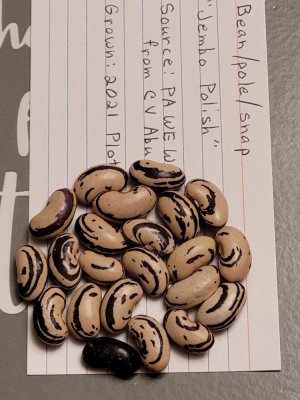
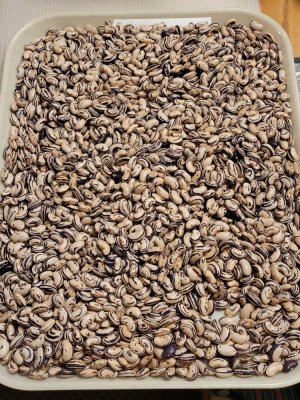
"Jembo Polish", pole snap/shelly. From William Woys Weaver 2005, originally from Abundant Life Seed Foundation. Strong climber to 8-10'. 5-6" X .75" wide flat pods, turning to purple-striped yellow when ripe, and shrinking down over the seeds when dry. OK as snaps, but best used for the very large, delicious 1"+ shellies. Dry seed is very large, 30/ounce. These were grown in the home garden, and were the one ray of light in an otherwise disappointing bean year... almost 4 pounds of dry seed, and a lot of shellies.
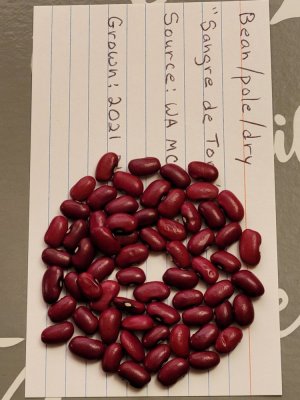
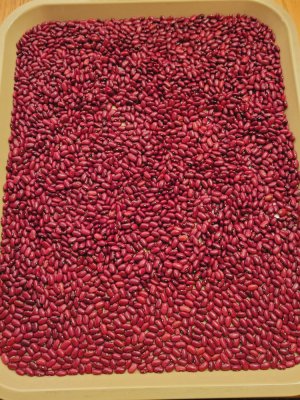
"Sangre de Toro" (bulls blood), pole dry. From an SSE member in 2007, originally from Honduras. Moderate climber to 6-7', but can be heavily branched, especially in the first 3'. Diminutive 4-5" pods borne in clusters of 4-6, turning bright red when ripe, purple when dry. Easy to shell. Dry seed small (120/ounce), glossy, and bright red. Despite the small seed size, the yield can be very high - but not this year. Even on the high end of the rural garden, the plants were waterlogged, and permanently stunted into bush habit. A partial recovery late produced 25 ounces of seed - from a 24' row. Enough seed, at least, to replenish my stock.
Enough seed, at least, to replenish my stock.
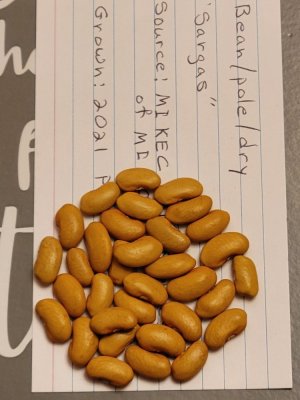
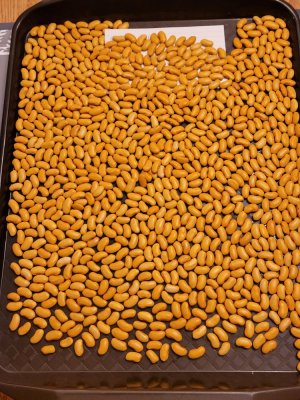
"Sargas", pole dry. Sent to me in 2014, by someone distributing the collection of the late SSE member Richard Schoolmaster of Michigan. Vigorous pole habit, moderately branched. The immature pods are green & fibrous, mature pods 6” long, yellow turning tan, and stay round when dry. Nearly all pods are borne well above ground level, so less attractive to rodents. Easy to shell. Dry seed slightly flattened, roughly the size & shape of Great Northern, 5-7 per pod... and nearly the same golden brown (or "mustard yellow") as the "Budapest II" in my previous bean post. Yield potential is high, 3.5 pounds the last time I grew it... but with half of the plants lost to flooding & the remainder stunted, only 11 ounces this year.
There were two total failures. I found my lost 2004 packet of "Ralph's Italian" from a swap, and sowed them indoors using rescue protocols... but it had been stored in less than ideal conditions, and all seeds were dead. And the pole wax bean "Blue Blockeye" (on the low end of the rural garden) germinated well, but was completely destroyed by subsequent flooding. In summary, while the over-all bean yield was about 1/3 of normal, there was at least enough seed of most beans for preservation & a few swaps.
In summary, while the over-all bean yield was about 1/3 of normal, there was at least enough seed of most beans for preservation & a few swaps.


"Grandma Robert's Purple Pole", from a 2006 Gardenweb swap with Darrell Jones, who inherited it from his Grandma Roberts in Pelham, Tennessee. Snap bean with round purple 5" pods. Dry pods often shrink down over seeds, and offer fairly good protection from moisture. It has an unusual attribute, in that the sprouts often have 3 or 4 primary leaves instead of the usual pair... something which appears in 10-25% of the seedlings. The source confirmed this peculiarity is genetic. Tolerates heat & is normally very productive, but the first round of flooding killed 1/4 of the row, and stunted the rest. A second round of heavy rains struck as the remaining plants were beginning to recover, killed another 1/4, and permanently stunted the survivors. Those survivors produced 8 ounces of seed, enough to replace the old stock... but I will grow it again soon, to preserve its unusual genetic traits.


"Jembo Polish", pole snap/shelly. From William Woys Weaver 2005, originally from Abundant Life Seed Foundation. Strong climber to 8-10'. 5-6" X .75" wide flat pods, turning to purple-striped yellow when ripe, and shrinking down over the seeds when dry. OK as snaps, but best used for the very large, delicious 1"+ shellies. Dry seed is very large, 30/ounce. These were grown in the home garden, and were the one ray of light in an otherwise disappointing bean year... almost 4 pounds of dry seed, and a lot of shellies.


"Sangre de Toro" (bulls blood), pole dry. From an SSE member in 2007, originally from Honduras. Moderate climber to 6-7', but can be heavily branched, especially in the first 3'. Diminutive 4-5" pods borne in clusters of 4-6, turning bright red when ripe, purple when dry. Easy to shell. Dry seed small (120/ounce), glossy, and bright red. Despite the small seed size, the yield can be very high - but not this year. Even on the high end of the rural garden, the plants were waterlogged, and permanently stunted into bush habit. A partial recovery late produced 25 ounces of seed - from a 24' row.


"Sargas", pole dry. Sent to me in 2014, by someone distributing the collection of the late SSE member Richard Schoolmaster of Michigan. Vigorous pole habit, moderately branched. The immature pods are green & fibrous, mature pods 6” long, yellow turning tan, and stay round when dry. Nearly all pods are borne well above ground level, so less attractive to rodents. Easy to shell. Dry seed slightly flattened, roughly the size & shape of Great Northern, 5-7 per pod... and nearly the same golden brown (or "mustard yellow") as the "Budapest II" in my previous bean post. Yield potential is high, 3.5 pounds the last time I grew it... but with half of the plants lost to flooding & the remainder stunted, only 11 ounces this year.
There were two total failures. I found my lost 2004 packet of "Ralph's Italian" from a swap, and sowed them indoors using rescue protocols... but it had been stored in less than ideal conditions, and all seeds were dead. And the pole wax bean "Blue Blockeye" (on the low end of the rural garden) germinated well, but was completely destroyed by subsequent flooding.


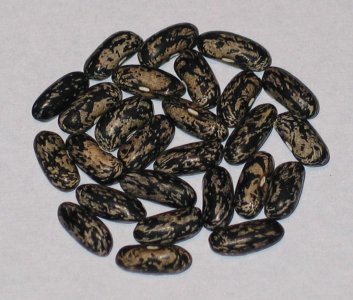
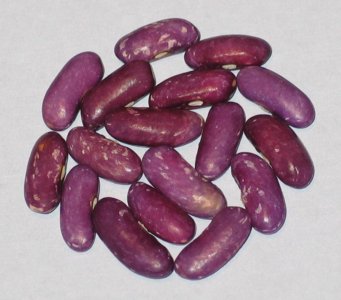
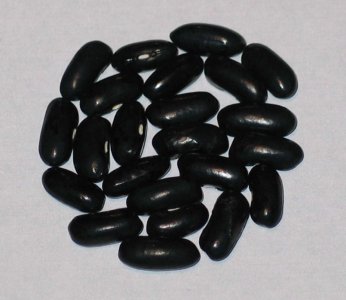
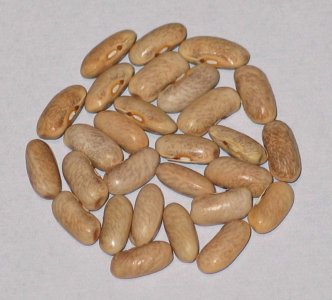
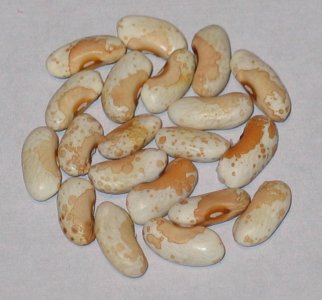
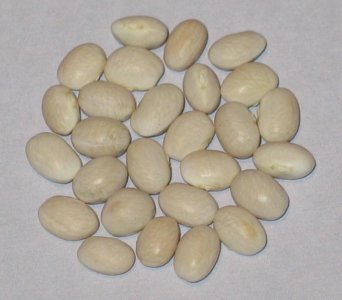
 Been there, done that... sometimes dodging raindrops in the process. "Dibramo"? I remember reading about the "Sicitalian Black Swamp" beans & being curious about them, but was scared away by descriptions of them being long season. Now I notice that Sandhill describes it as well adapted to Northern climates...?
Been there, done that... sometimes dodging raindrops in the process. "Dibramo"? I remember reading about the "Sicitalian Black Swamp" beans & being curious about them, but was scared away by descriptions of them being long season. Now I notice that Sandhill describes it as well adapted to Northern climates...?  I may need to try it one of these years.
I may need to try it one of these years.